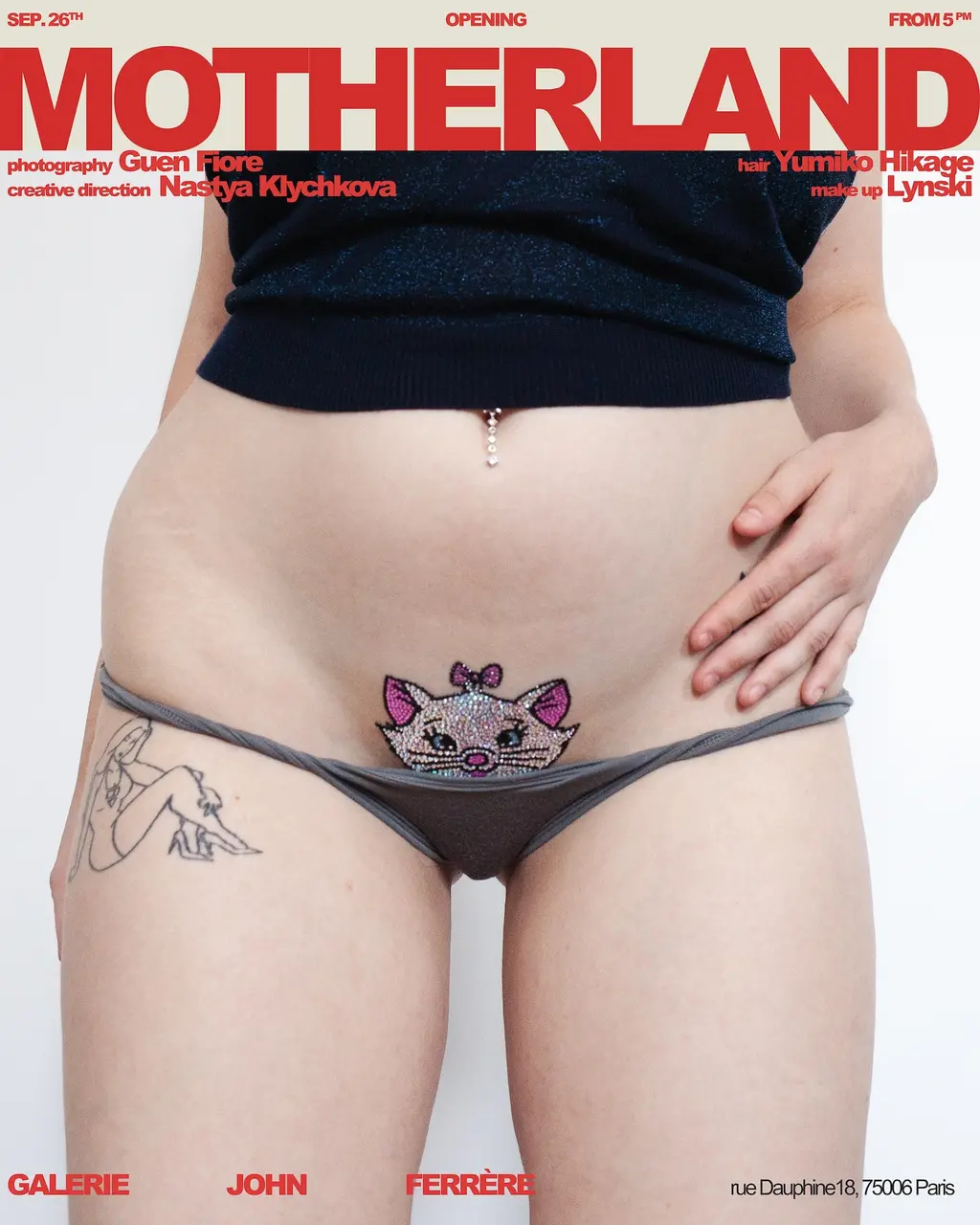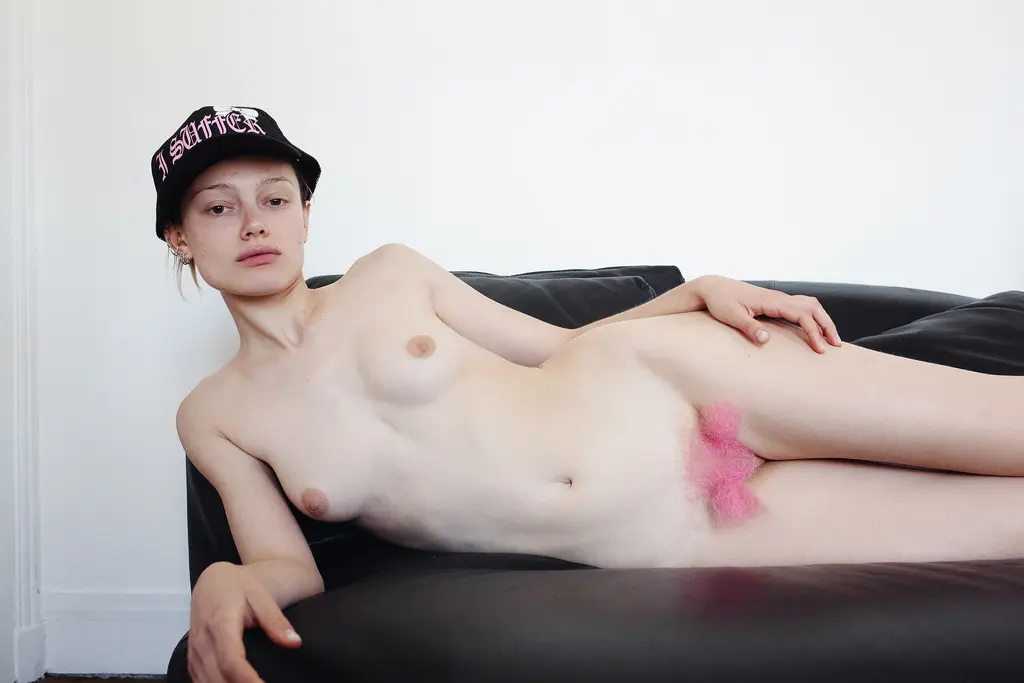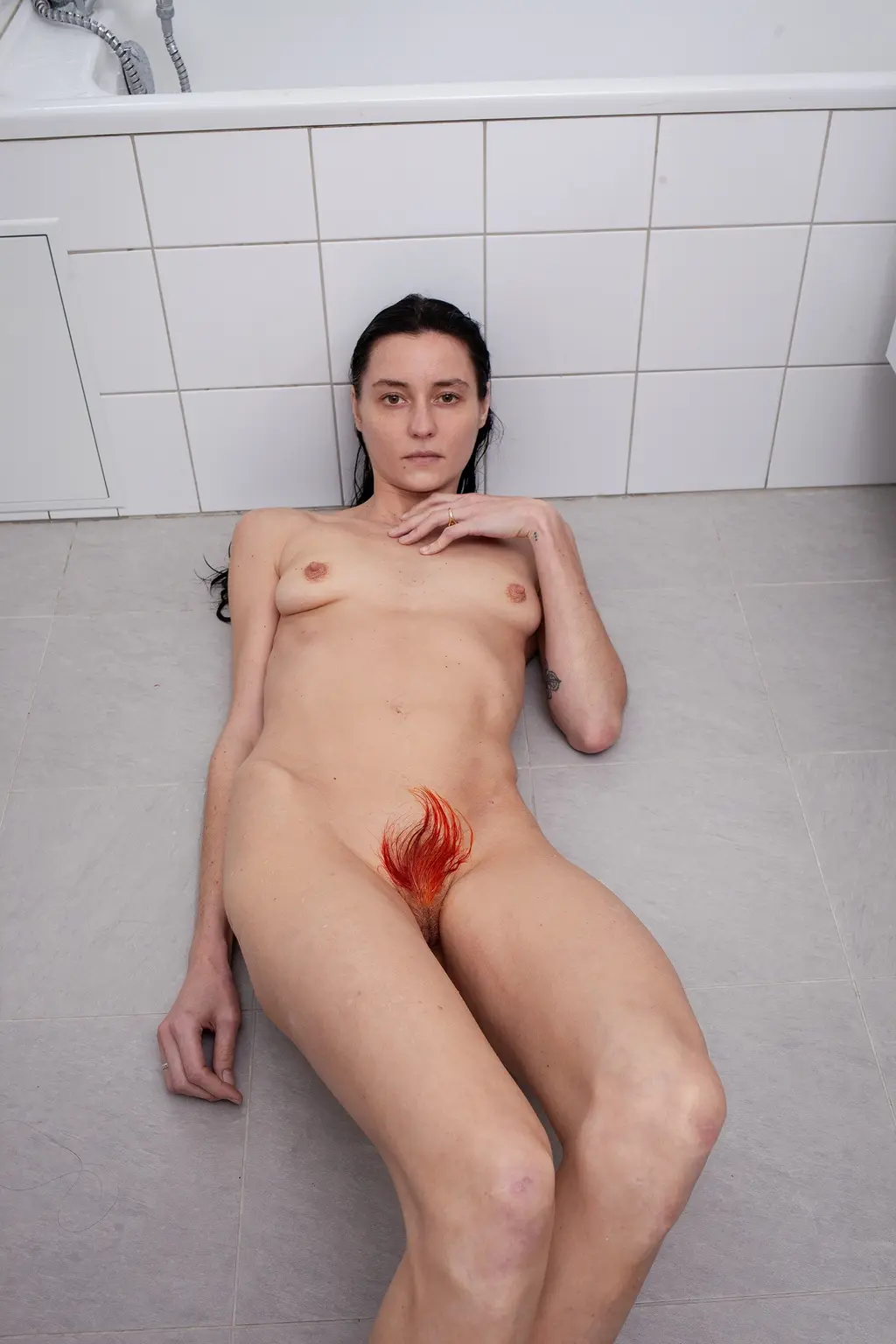This photo project pushes the possibility of pubic hair to its limits

Plaited, dyed, pom-pommed, bejewelled: these are the pubes of Motherland, a transgressive and playful project put together by artists Guen Fiore, Nastya Klychkova, Yumiko Hikage and Lynski.
Culture
Words: Tiffany Lai
According to Berlin-based artist Nastya, embracing and growing out your pubic hair is the last bastion of self-acceptance. “In spite of the fact that the media has been confidently promoting the ideas of [body positivity] and self-love, for many people the path to this turns out to be a long one,” she says.
Together with her friend and photographer Guen Fiore, make-up artist Lynski and hair (or in this case, pube) stylist Yumiko Hikage, Nastya has created Motherland, a photo project-slash-exhibition that playfully examines the societal discomfort around pubic hair.
The images, needless to say, don’t cater to the male gaze in any capacity. Models, nude from the waist down, look calmly down the camera lens, seemingly unbothered by its presence; meanwhile, close-ups of intricate pubic wigs (hairpieces attached to vulvas), bejewelled cartoon characters peeking out over thongs and braided pubes hang between their legs.
“We find intimate hairstyles symbolic because the vagina – its image and the word itself – has been taboo for most of human history,” says Nastya. “In a way, we want to contribute to breaking down this stigma. The main focus of the project is its heroines. The intimate hairstyles are just a form of expression of their personality.”
“It felt right not to take everything too seriously,” says Guen. “The topic itself is already deeply personal and we quickly realised how much society makes women feel uncomfortable – not just with their body hair, but even more so with something as simple as accepting their vaginas. Humour brought a much-needed lightness to it.”
Motherland was eventually turned into a provocative exhibition at Galerie John Ferrère in Paris in September. “A woman from Canada came into the gallery and said, ‘Wow! This is so shocking and fantastic at the same time’,” Guen says with a laugh. “And then a man in his sixties chimed in: ‘This is what the city needed.’ That’s exactly the kind of reaction we were hoping for!”

Vajazzle: for or against?
Lynksi: I love it, the more rhinestones the better! When I was prepping for this project I had a little revelation. I knew I wanted to create a rhinestone aristocat [vajazzle] but I couldn’t find a way to do it that didn’t involve sticking the stones on one by one. In the end I just had to do it, which made me think of Marina Abramović’s Counting the Rice exercise. It involves separating rice and lentils and counting them while remaining seated, exploring human nature’s tendency to take shortcuts. Of course, I wasn’t counting rice but by the end, I was really proud of the work.
Will you be expanding on this project?
G: We have no idea where this project is headed yet. It all started super spontaneously, just us creating for the sake of it. It’s definitely not made for social media, promoting it was a nightmare – I’ve been shadow-banned on Instagram for what feels like forever.
But the gallery just felt like the right place for the work. We curated the entire exhibition ourselves, rented the gallery and pretty much improvised the whole thing in a month! It’s all new territory for us, but the experience has been amazing and the response even better. We’d love to take it to other places in the future.
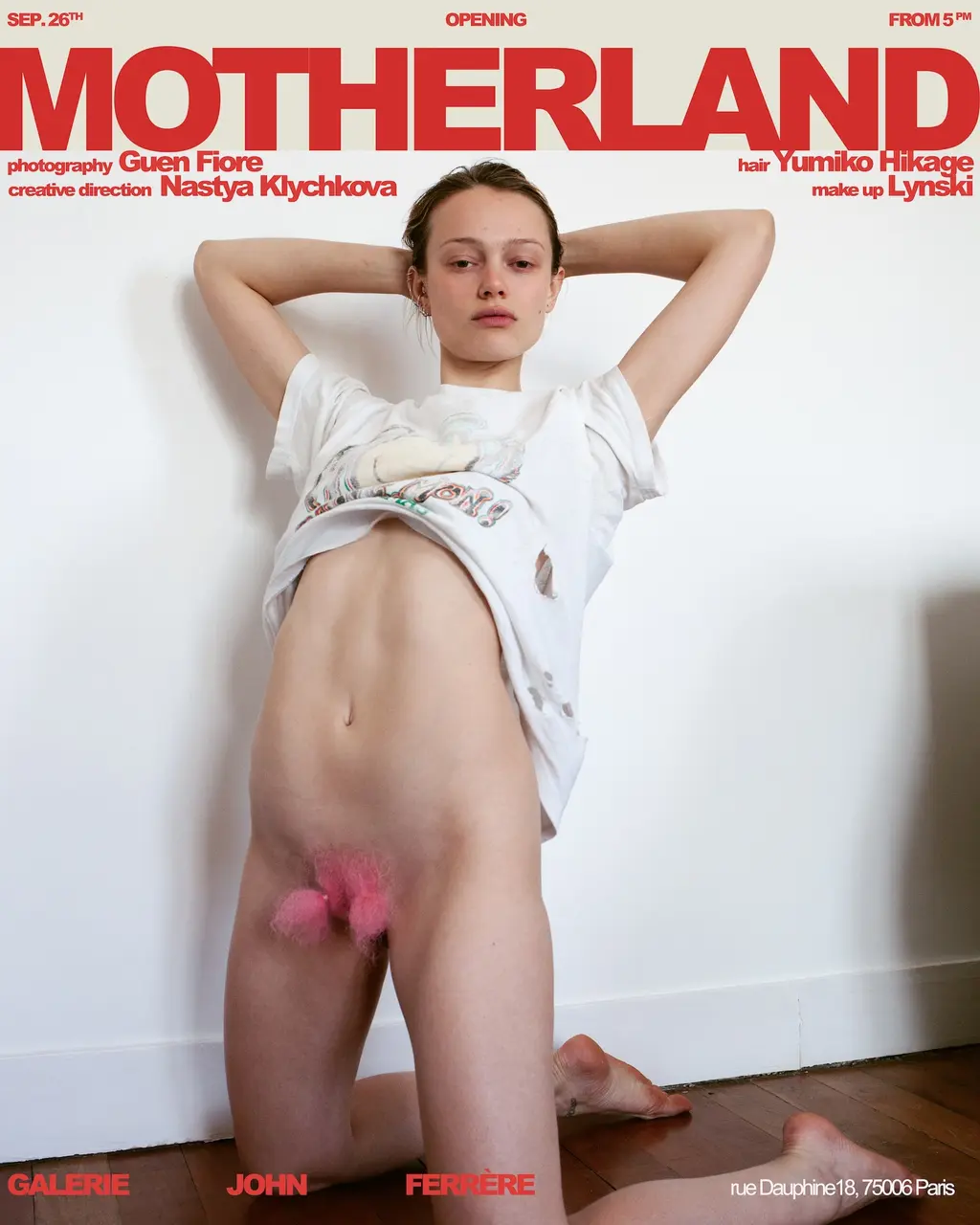
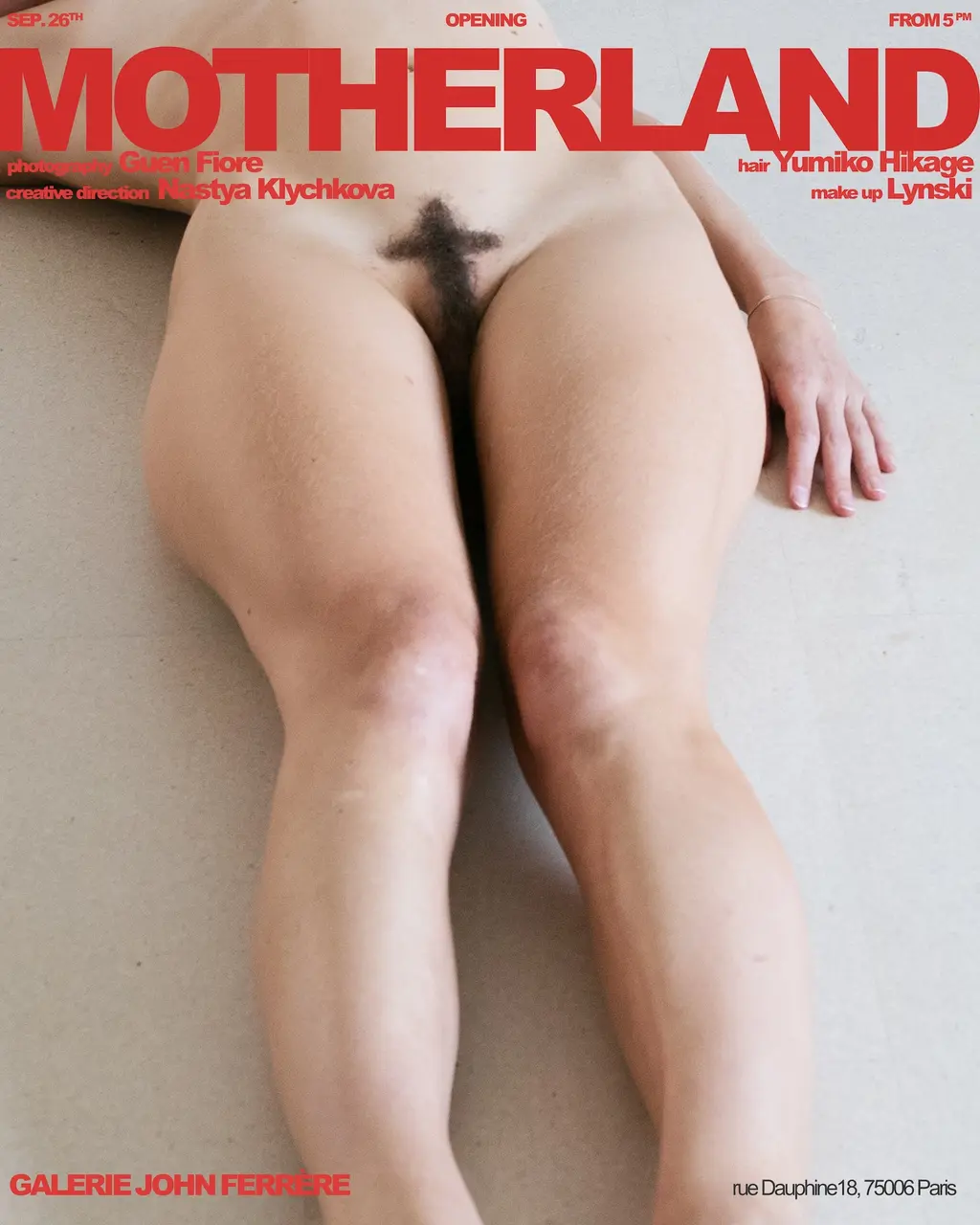
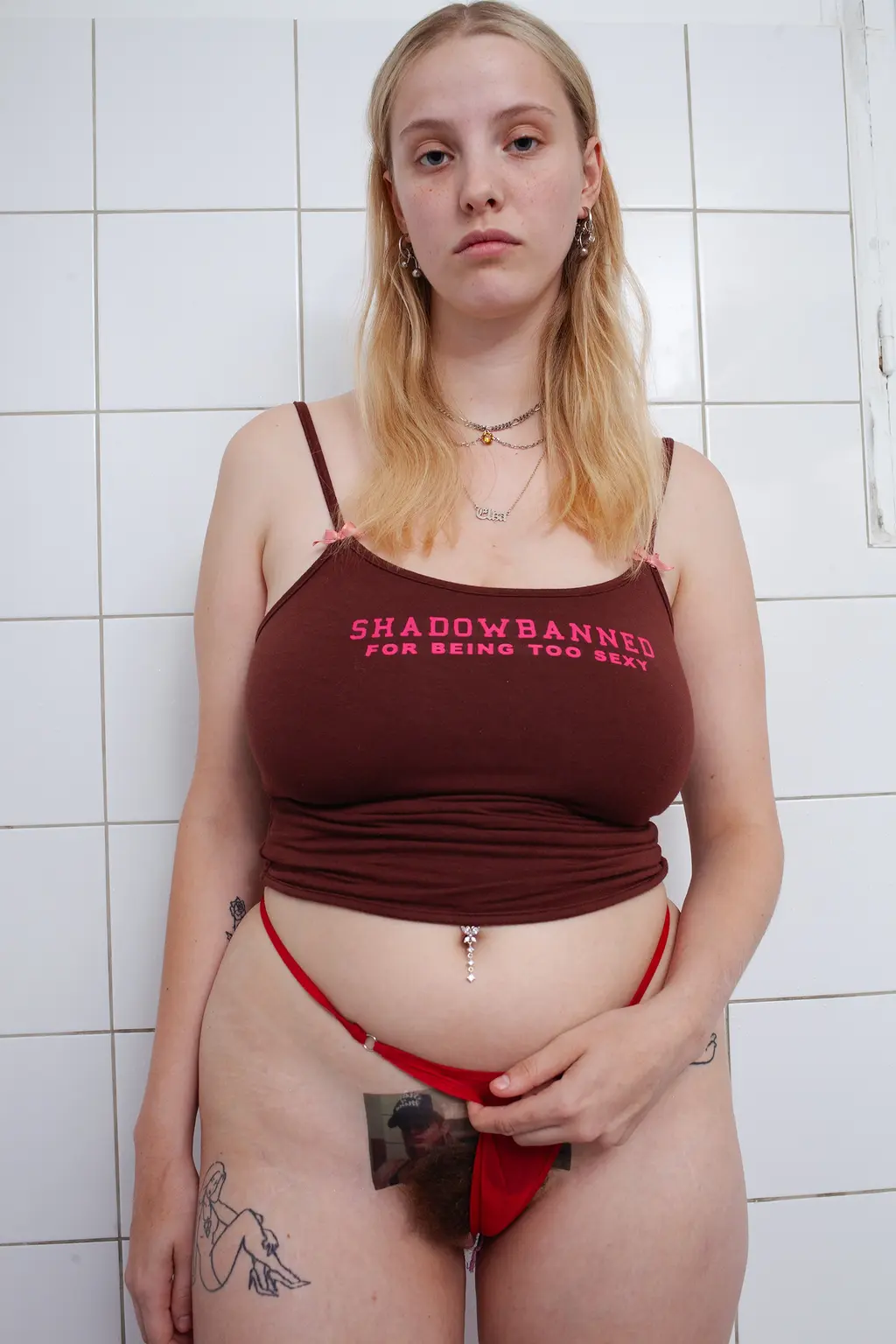
How has your relationship with pubic hair evolved over the years?
Yumiko: Many people experience societal pressures around grooming and body image, including pubic hair. These attitudes can change over time due to cultural trends, personal preferences or broader movements toward body positivity and self-acceptance. I don’t have pubic hair anymore but we have pubic wigs now. It’ll be a part of fashion in the future.
Nastya: For many years, any topic related to vaginas was taboo but, intuitively, it always felt like there shouldn’t be any hair there. I think it’s the influence of pop stars from the early 2000s, who wore low-cut jeans [which showed off their] shiny, hairless bodies smeared with oil.
So I saved up my money and got laser and now my hair doesn’t grow back. For me, pubic hair is like protection. Nature made us this way for a reason. It’s very important that we have a choice.
How did you cast this project?
N: As pubic hair is quite an intimate topic, not everybody is okay with showing it on camera, so we decided to work with friends and muses whose stories and lives we are intimately familiar with. It was very important to us that everyone felt comfortable and confident on set. We laughed a lot and drank champagne. It didn’t matter that people were naked, there was no shame. It was a very supportive environment.
Yumiko, as the pube stylist on set, what were you inspired by?
Y: We selected symbolic motifs for each model. We all know Simona [one of the models] as a very positive and joyful woman, so we felt that two curly, pink ponytails were a very fitting representation of her mood. [Another model] Sasha’s symbol is a phoenix, so we designed hers with flames in mind. I tried not to be too rigid with my plans.
